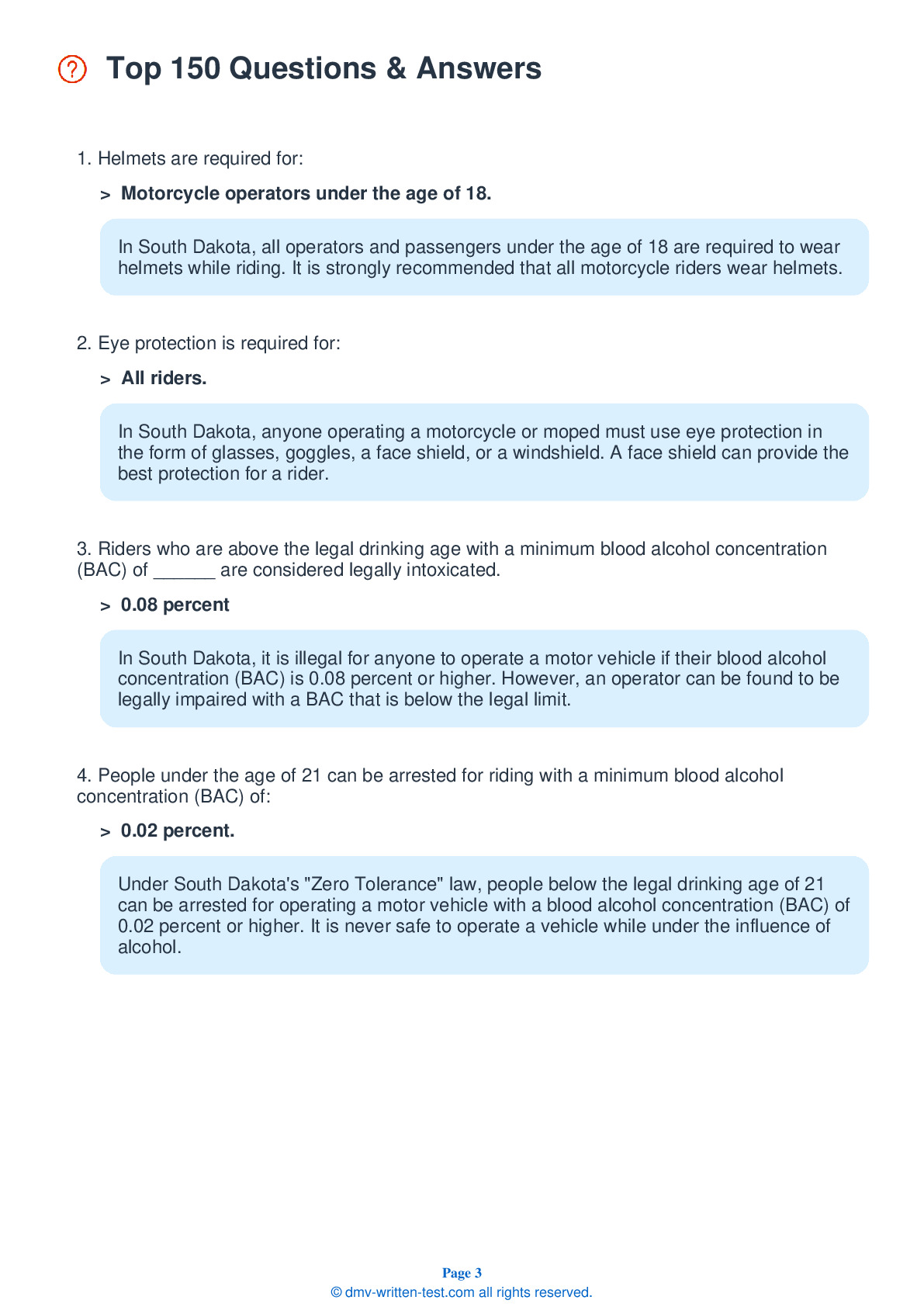2025 South Dakota Motorcycle Permit Test 14
The following questions are from real DMV written motorcycle permit tests. These are some of the actual permit questions you will face in South Dakota when getting your motorcycle learners permit. Each motorcycle theory practice test question has three answer choices. Select one answer for each question and select "grade this section." You can find this button at the bottom of the drivers license quiz. For a complete list of questions and answers for South Dakota please visit https://cheat-sheets.dmv-written-test.com/en/south-dakota/motorcycle.
Number of Tests
Number of Question
Passing Score
7. When traveling at night, you should:
Explanation
When traveling at night, ride more slowly than you would if riding during the day, especially when traveling on an unfamiliar road. Riding more slowly allows you additional time to avoid hazards under conditions of decreased visibility.
8. Before starting out, you should make sure the fuel valve is:
Explanation
Before setting out on a ride, you should make sure that your motorcycle's fuel supply valve is open. If the fuel valve is closed, the engine may still start with the fuel that is remaining in the lines from a previous ride, but it will stall once the lines are empty.
9. To reduce the chances of a collision, a motorcyclist should:
Explanation
To reduce the risk of being involved in a collision, consistently scan your path of travel at least 10 to 15 seconds ahead of your motorcycle. Scanning the road ahead will give you time to react to a hazard before meeting the hazard.
10. A plastic, shatter-resistant face shield can protect you from:
Explanation
A plastic, shatter-resistant face shield can protect your face in the event of a crash. It also provides protection against more routine hazards, such as pebbles thrown up from other vehicles, wind, dust, dirt, rain, and insects.
11. Your lane position should do all of the following, except:
Explanation
A properly chosen lane position should provide a number of benefits, including an increased ability to see others and to be seen. It should help you avoid wind blasts, other drivers' blind spots, and surface hazards. Your lane position should discourage other drivers from trying to share your lane and provide you with an escape route, should a hazard arise.
12. When approaching a blind intersection, riders should:
Explanation




